-
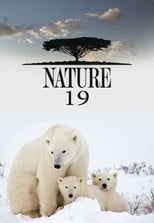
-
-
Nature : Season 19
-
Air date: 22 Oct '00 - 16 episodesConsistently stunning documentaries transport viewers to far-flung locations ranging from the torrid African plains to the chilly splendours of icy Antarctica. The show's primary focus is on animals and ecosystems around the world. A comic book based on the show, meant to be used an as educational tool for kids, was briefly distributed to museums and schools at no cost in the mid-2000s.
-
-
List of Episodes (16)
-
Nature (1982)
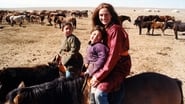
-
1. Wild Horses of Mongolia with Julia Roberts
22 Oct '00Julia Roberts, one of the most famous and beautiful American actresses of today, lives among the nomads of Mongolia and discovers their relationship with the horse.
-
Nature (1982)
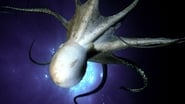
-
2. The Octopus Show
29 Oct '00A new age of ocean exploration is lifting the veil of mystery shrouding a creature of legend -- the octopus.
-
Nature (1982)
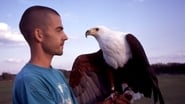
-
3. Extraordinary Birds
12 Nov '00Discover amazing birds -- from hummingbirds and peregrine falcons to parrots and barn owls -- on NATURE's "Extraordinary Birds."
-
Nature (1982)
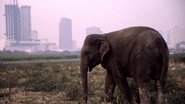
-
4. The Urban Elephant
19 Nov '00The enigmatic subjects of NATURE: The Urban Elephant, Asian elephants are losing territory to the inevitable process of deforestation. Industrialization all over Asia has hurt the mahouts, or elephant drivers, so that the trained elephants and their riders are being driven into major cities such as Bangkok to earn a meager living receiving donations and food from curious tourists.
-
Nature (1982)

-
5. Intimate Enemies: Lions and Buffalo
17 Dec '00Life on the savannah of southern Tanzania is a study in contrast between rainy and dry seasons. When water is abundant, the wildebeest at the rivers provide food for the lion population, while the buffalo graze contentedly on the succulent grasses in the hills. The two great adversaries -- lion and buffalo -- can keep their distance.
-
Nature (1982)

-
6. Polar Bear Invasion
07 Jan '01Each October, the remote Canadian town of Churchill in Manitoba plays host to some very unusual guests. More than a thousand hungry polar bears gather there to await the refreezing of Hudson Bay and then move out on the ice in pursuit of their traditional winter diet of seal. The world's largest land carnivore, polar bears can be very dangerous for humans as well as sea creatures -- but for tiny Churchill, they also are a tourist-dollar bonanza.
-
Nature (1982)

-
7. Triumph of Life: The Four Billion Year War
15 Jan '01THE FOUR BILLION YEAR WAR explains how both conflict and cooperation have helped shape the species that today populate our world. And it profiles the winners and losers in this epic evolutionary contest — from the massive dinosaurs who disappeared long ago to the humble bacteria that have survived for billions of years virtually unchanged.
-
Nature (1982)
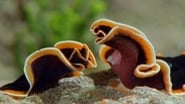
-
8. Triumph of Life: The Mating Game
21 Jan '01Gene Swapping Variety is indeed the spice of life. That is the message of THE MATING GAME, Part 2 of NATURE’s six-part TRIUMPH OF LIFE series. It takes a passionate look at the evolution of sex, which allows a species to pass its genes along from generation to generation.
-
Nature (1982)
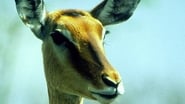
-
9. Triumph of Life: The Eternal Arms Race
28 Jan '01For billions of years, life on Earth has been engaged in its own ETERNAL ARMS RACE, the subject of Part 3 of NATURE’s TRIUMPH OF LIFE. As predators became better hunters, their prey also evolved better defenses.
-
Nature (1982)
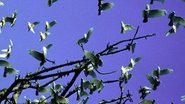
-
10. Triumph of Life: Winning Teams
04 Feb '01Life may be a contest in which only the fittest individuals survive, but cooperation has also played a key role in evolution. WINNING TEAMS takes a close look at the alliances that animals have forged — with others of their own kind and very different organisms — in a bid to stay alive. In fact, teamwork occurs everywhere, from flocks of birds and herds of wildebeest to colonies of ants and termites.
-
Nature (1982)
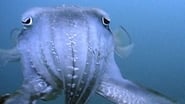
-
11. Triumph of Life: Brain Power
11 Feb '01Hearts, eyes, flippers and wings — evolution has forged many remarkable body structures. But none is more amazing than the brain, that bundle of nerve cells that allows us to sense our surroundings, sort out information, and make decisions. Indeed, the great importance of BRAIN POWER to evolution is the subject of this week’s installment of NATURE’s TRIUMPH OF LIFE series.
-
Nature (1982)
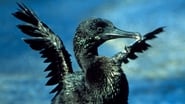
-
12. Triumph of Life: The Survivors
18 Feb '01This sixth installment focuses on the mass extinctions that have occurred over time. Though attention is paid to the factors that probably led to the demise of the dinosaurs, far more time is devoted to examining a wide variety of land and sea creatures that are continuing to fight off extinction. Climate changes, the birth of more highly evolved life forms, and changes in ocean currents are just a few of the factors that can play a major role in determining which species will prevail. Scientist
-
Nature (1982)
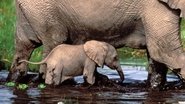
-
13. Baby Tales
04 Mar '01Who can resist the magnetic allure of a baby? The presence of little ones of any species invariably generates instant attention and concern from onlookers. In fact, it seems that both humans and animals are hard-wired to find youngsters adorable. The practical and essential reasons why the very young have an ability to play on our heart strings are explored in Baby Tales.
-
Nature (1982)

-
14. The Panda Baby
04 Jan '01The birth and survival of a panda cub signals hope for the world's most cherished endangered animals, in NATURE's The Panda Baby.
-
Nature (1982)

-
15. Golden Seals of the Skeleton Coast
06 May '01The saga of one South African fur seal's adventures and adversities as he matures into a massive bull is captured on GOLDEN SEALS OF THE SKELETON COAST. The saga starts with the male pup's birth along the barren, windswept Skeleton Coast in West Africa. By the time he takes his first breaths, he's already facing danger -- in the form of jackals invading the seal colony.
-
Nature (1982)

-
16. Australia's Little Assassins
20 May '01When animals are the subject, most people associate Australia with lovable koalas and leaping kangaroos. But an even more distinctive aspect of Australian wildlife is its abundance of animals -- from snakes and spiders to a host of marine life forms and at least one mammal -- that use venom to defend themselves, attack prey, and in some cases help digest food.
-



















